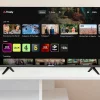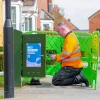Top Fastest UK Mobile and Home Broadband ISPs for H1 2023

We take a quick look back to see how the average UK broadband download and upload speeds have changed across the fastest nationally available fixed line ISPs and mobile operators over the past six months. Suffice to say, the growing coverage of gigabit-capable fixed line and 5G networks continues to push performance.
The result below stem from web-based speed testing by consumers and are thus inevitably impacted by a number of factors, such as the rising coverage of faster networks (e.g. full fibre and 5G) and the associated level of take-up by customers. Due to this, it helps to understand any key changes in network deployments since the start of the year, and there have been a few (Ofcom’s data).
| Fixed Connection | H1 – 2023 Coverage (H2 – 2022) |
| % Under 10Mbps (USO) | 1.4% (c. 2%) |
| Superfast (30Mbps+) | 97% (97%) |
| Gigabit-capable (any speed) | 73% (70%) |
| Full Fibre (FTTP) | 48% (42%) |
The increasingly rapid rollout of Fibre-to-the-Premises (FTTP) lines by more than a hundred different network operators (Summary of Full Fibre Build Progress) – particularly via Openreach (BT), CityFibre and Virgin Media (VMO2) – are currently what is driving all of the recent improvements in both full fibre and gigabit-capable coverage.
Advertisement
Meanwhile, some 73-82% of premises can now get outdoor 5G coverage from at least one operator (up from 67-78% at the end of 2022) and geographic coverage of 4G networks across all operators sits on a range of 80-87% (largely unchanged).
Sadly, we don’t have any recent take-up data from Ofcom (they usually only release this once a year), but at the end of 2022 some 73% of UK consumers had adopted a fixed “superfast” (30Mbps+) connection, while 25% took a full fibre service and 38% had adopted gigabit connections.
Fastest Fixed Broadband ISPs (H1 2023 vs H2 2022)
The data in this report stems from Thinkbroadband’s independent speedtest database (inc. ISPreview’s Broadband Speedtest). In the table below, we’ve only included independent ISPs with strong national availability, but there is a separate table for smaller alternative networks on page 2 – these are difficult to include because they aren’t yet available to the majority of premises and thus don’t produce much test data.
Naturally, there are caveats to consider with speedtest based studies like this, not least because such scores tend to be more reflective of take-up than network availability. For example, some ISPs may have a much larger proportion of customers on slower copper ADSL or FTTC lines and that can weigh against anybody on faster FTTP or gigabit packages with the same provider (i.e. pulling average speeds down). The opposite can also be true.
Advertisement
Average Download Speeds – Top 10
| No. | Operator | H1 – 2023 (Top 10%) | H2 – 2022 (Top 10%) | Change % |
| 1. | AAISP (Andrews & Arnold) | 276Mbps (896.7Mbps) | 166.4Mbps (470Mbps) | 65.87% |
| 2. | Virgin Media | 252.5Mbps (567.4Mbps) | 204.1Mbps (468.3Mbps) | 23.71% |
| 3. | iDNET | 182.6Mbps (502.2Mbps) | 153Mbps (486.7Mbps) | 19.35% |
| 4. | Zen Internet | 142.1Mbps (370Mbps) | 113.6Mbps (308.7Mbps) | 25.09% |
| 5. | Vodafone | 99.2Mbps (233.4Mbps) | 78.7Mbps (146Mbps) | 26.05% |
| 6. | BT | 97.4Mbps (253.3Mbps) | 78.3Mbps (149.4Mbps) | 24.39% |
| 7. | TalkTalk | 60.2Mbps (93.9Mbps) | 51.4Mbps (75.4Mbps) | 17.12% |
| 8. | Plusnet | 57.8Mbps (81.3Mbps) | 39.2Mbps (70.2Mbps) | 47.45% |
| 9. | EE | 55.5Mbps (89.4Mbps) | 53.6Mbps (74.8Mbps) | 3.54% |
| 10. | Sky Broadband | 54.8Mbps (96.2Mbps) | 50.1Mbps (74.8Mbps) | 9.38% |
Average Upload Speeds – Top 10
| No. | Operator | H1 – 2023 |
H2 – 2022 | Change % |
| 1. | AAISP (Andrews & Arnold) | 91.9Mbps | 26.8Mbps | 242.91% |
| 2. | iDNET | 84Mbps | 62Mbps | 35.48% |
| 3. | Zen Internet | 46Mbps | 41.4Mbps | 11.11% |
| 4. | Vodafone | 35.6Mbps | 30.7Mbps | 15.96% |
| 5. | Virgin Media | 29.1Mbps | 22.7Mbps | 28.19% |
| 6. | BT | 20.6Mbps | 18.1Mbps | 13.81% |
| 7. | TalkTalk | 19.2Mbps | 12.4Mbps | 54.84% |
| 8. | Sky Broadband | 13.5Mbps | 12.1Mbps | 11.57% |
| 9. | EE | 12.9Mbps | 13.8Mbps | -6.52% |
| 10. | Plusnet | 12.8Mbps | 9.1Mbps | 40.66% |
Overall, the average download speed of the top national providers was 127.81Mbps (up from 98.84Mbps six months ago) and the average upload speed hit 36.56Mbps (up from 24.91Mbps).
The main change this time has been AAISP’s leap of several places to reach the top of the table, which most likely reflects the combination of several recent changes, such as last year’s launch of faster FTTP tiers on Openreach’s national network and the more recent launch of several CityFibre powered packages.
Advertisement
A strong improvement was also seen by Plusnet, which we suspect is down to last year’s launch of FTTP plans. But they currently remain hobbled by a large base of customers on slower copper-based broadband lines and the lack of a Digital Voice product may also make it harder for them to convert existing customers to full fibre users.
Satellites
Since early 2022 we’ve also been adding some results for SpaceX’s satellite based Starlink broadband service. Sadly, not enough data exists to include other satellite platforms or providers.. yet. The good news is that Starlink’s download speeds have, after an earlier fall, continued to improve. On the flip side, upload performance slid downward again.
| H1 – 2023 (Top 10%) | H2 – 2022 (Top 10%) | |
| Download | 135.1Mbps (209.5Mbps) | 118.6Mbps (190.8Mbps) |
| Upload | 9.8Mbps (14.3Mbps) | 10.8Mbps (16.3Mbps) |
Now flick over to page 2 to see how the fastest full fibre alternative network (altnet) ISPs and mobile operators performed.
Mark is a professional technology writer, IT consultant and computer engineer from Dorset (England), he also founded ISPreview in 1999 and enjoys analysing the latest telecoms and broadband developments. Find me on X (Twitter), Mastodon, Facebook, BlueSky, Threads.net and Linkedin.























































Really happy with the substantial progress in reducing the number of people below USO, but sad that Superfast has not budged
AAISP are very good iSP but expensive thought. You get quality service and paid for!
the inclusion of ISPs with datacaps I don’t think represents a like for like comparison.
Why? This isn’t a package comparison, it’s a report on average measured speeds. Does what it says on the tin.
And if you’re referring to AAISP, because they slow down customers who exceed their cap, that’s already within these figures, and despite that they’re still top of the table. Anyone who doesn’t like AAISP’s business model is free to enjoy the services of alternatives.
Great to see serious speeds, and strong performance from challenger companies in my view – and an excellent bit of analysis by ISPR.
because like i said its not like for like. I’m completely happy with their business model, but like I said in my comment it isn’t the same.
Lets switch this to an analogy, or use alternatives. If these were roads and you could travel on the road at any time, for however long in every single road and someone compiled a list of queue times for those roads but one of those roads mentioned was instead limited to 3 travels per month then of course that factors in.
Or if we use the gym membership analogy, you can go to the gym at any time for however long you want and someone compiled a list of the busiest times to find out the average wait periods but one of the results was a gym which only let you 3 times a month – it wouldn’t surprise you that the gym which only lets you in 3 times a month would be less populated.
It isn’t like for like, and thats ultimately what people generally look for when you make lists / comparisons. If i’m looking at a list of theatres to buy tickets to go see some play, and all of them sell out within x period of time except this one place which never sells out because they limit the amount of repeat customers then its not like for like.
I understand some ISPs have devout, almost cult like followings but we can be objective about things cant we?
A&A’s speeds are high because their customers, used to paying premium speeds and generally being pretty technically minded, have piled into the gigabit tier as it became available because they can and they want to.
These averages are not an indication of the ISPs quality and haven’t been for some time, they’re an indication of the packages on offer and the inclinations of the customer base.
Virgin Media are second. You think that’s because they’ve the second highest quality or, maybe, because they don’t have loads of customers on 40, 55 and 80 Mbit FTTC, with many with FTTP taking 160 or lower?
For these to be legitimate quality metrics you’d need to compare customers like for like via wired connections to known good devices like Ofcom’s Sam Knows network.
@XGS Is On, so what you are saying is that stuff above is a total and complete waste of time and means nothing?
It would be churlish to say it’s meaningless however the results should be taken in context. They’re reflective of tier mix not network performance.
On that basis, am I in the clear to call mrpops2ko a churl? 🙂
@XGS Is On, there will be a lot of providers missed out for a start, like the one I am on, their top tier is 2Gb/s.
Their outlying products like 2G will be ignored or contextualised but I imagine the ‘base line’ will be the 900M / 1G product given that’s one that nearly all have and is the cool number all the kids want.
While most folks are still on Openreach there’s plenty of scope to compare the bulk of the market directly, while VM and the alternative networks sit on the side.
@XGS Is On, my provider is not even on the list. i know it is a small provider, but it has increased the speed of the internet in the city where I live.
I know it is a small group, but the majority of the people I chat to who are thinking about going for FTTP is looking at the 400/500Mb/s mark, as it is the middle mark I suppose. Some are going to around 100/150 as they don’t feel they need anything more. That is what I would have gone for if they did not bring out the offer they have on 500Mb/s. One household I know said they will stay at the same speed they are on now, which is around 38Mb/s if they have to change to fibre, They are with Talk Talk and according to Talk Talk FTTP is not available here, useless company.
some people will go for Gigabit because they listen to the hype, my other half did that and now realise she doesn’t need that speed. Not saying that everyone don’t need the speed.
i choose what I did because it was a good price, I can afford higher speeds, but I can’t justify the cost. If money was no object, I doubt I would go for anything faster than 500Mb/s. But then if money was no object, I would not be here.
“strong improvement was also seen by Plusnet……the lack of a Digital Voice product may also make it harder for them to convert existing customers to full fibre users”
Which is only going to get worse as their provisioning department has stated that even though hub 2 has a telephone adaptor, they have no intention of enabling it or offering Digital Voice products. Their aim is to be a broadband only provider. Whilst they don’t want to loose customers, to be aware of that when signing up for a new deal in the run up to 2025.
Given that the large copper base mentioned is likely to include a lot of landline users. Their help and support is particularly good for the demographic that use them, they seem to be shooting themselves in the foot.
I’m a bit lost by the debates over Digital Voice, it’s super easy to sort out landline replacements using current technology. All they need to do is offer a range of sim enabled rechargeable mobiles/phones, with a VOIP app installed to offer service over Wifi when home, automatically switching to Cell service if Broadband unavailable. They could offer a range of phones at various price points, or allow people to use their own mobile by installing app’s made available from the relevant app store, and covered under their mobile subscription/contract. It seems a no brainer to me and would probably sort out any issues for 98% of the population, leaving a few percent needing something bespoke where Cell coverage is poor.
I wonder if clever manufacturers will offer sim/voip-WiFi enabled vintage/retro style home phones, with large battery capacity for people who want something stylish and different in their homes.
… or they could use the hardware they (PN) have paid for in each hub 2, and figure out how to use BT’s existing digital voice platform. If someone wants a mobile, EE will sell them one.
for what it’s worth BT actually did use to have an app that let you make and receive calls using your landline number and bill, but took it away some time ago.
Unlikely. Most landlines don’t even have a phone plugged in, they’re just a hangover from the days before naked broadband. The lack of a voice service is not the dissuader you seem to think it is.
Just a thought says ref the lack of digital voice should not be a problem. Many people choose not to use a landline because Mobile is a lot cheaper, or in my case I pay Three for everyting unlimited then after a year block my incoming calls and tell bare faced lies about it
@james smith, people use mobiles because it is more convenient, a lot of people have their mobile with them or very close even in the house, it seems to be a thing. It is strange you saying that mobiles are cheaper, because not that long ago mobile phones cost a lot more than landlines to use.
a lot of people use text or some sort of messaging system these days, something that is not really possible on a home phone. I know BT did bring in a system years ago that allowed people to text a landline.
i have been using VoIP for years, so the lost of my landline is not a problem, but we need to think about the people who do use their landline and rely on it and need help to make the changes
Landline BB figures don’t bode well if BT insist on switching to EE.
Switch to the EE branding won’t make any difference, they both use the same network now. The EE speed is lower as they were slower to start selling FTTP so have more, slow, FTTC customers.
@XGS Is On, I expect EE uses the same customer service department as BT, so no doubt will still be rubbish. I know a few people who is on EE broadband, only FTTC, but they have noticed that the prices are now the same as BT, EE were slightly cheaper, so BT is now bringing the prices of EE to BT level, that is going to annoy a lot of people.
i realise that BT is going to keep Plusnet as their budget option, well so we are told. Two of the people i know have already decided to move from EE, they did think about plusnet, but now decided that the alt net here would be a better choice and they can get a sim only package for their mobile.
Okay, Ad.